

Social media marketing is fashionable.
All companies want to make small or big.
That’s understandable; the attention is on social networks. All in all, almost 3.5 billion people are present on social networks in 2019.
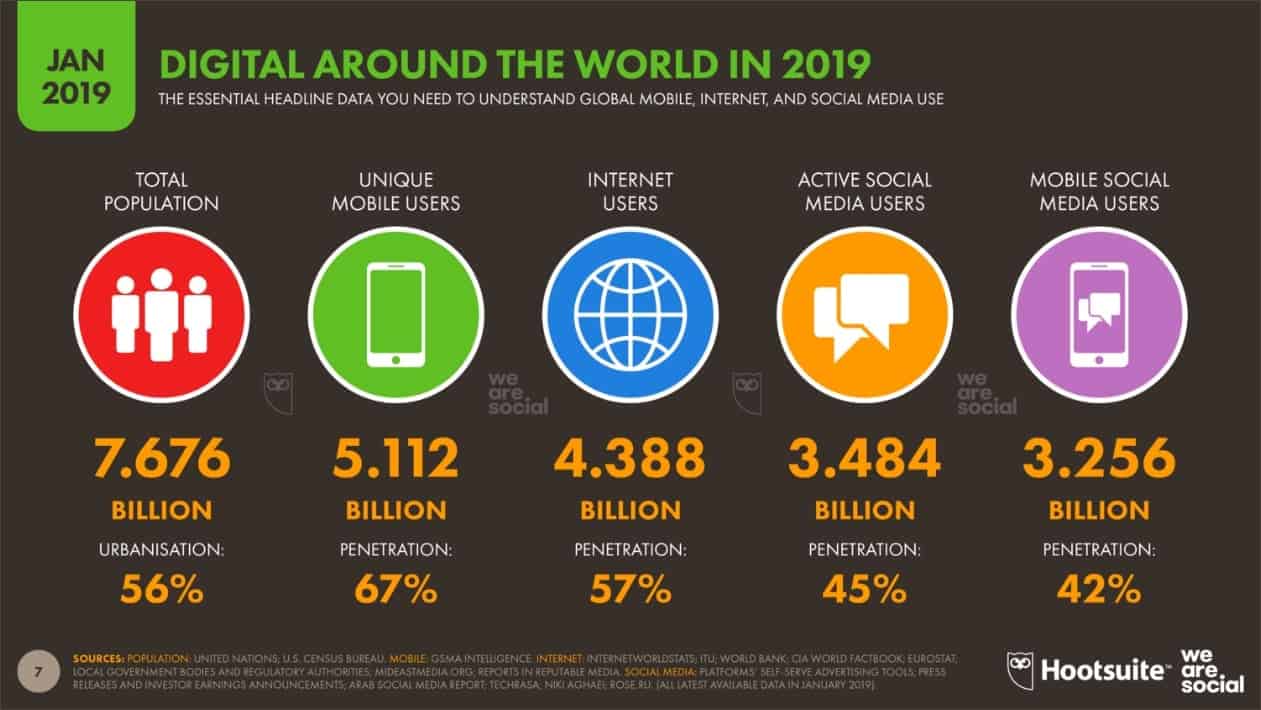
What’s even crazier is that today, people are walking down the street looking at their phones.
They watch Instagram stories on public transport and watch videos on YouTube in the evening before going to sleep.
But did you notice …
Some companies have thousands of fans on social networks and astonishment, almost nobody reacts to their publications, while others have three times less, but dozens of people comment on their books.
Does this mean that social networks are not as easy to use as we think?
I would say yes!
It’s not because you know how to post a video on social networks that you will succeed.
Sorry to disappoint you.
You must have a strategic approach and especially understand the algorithms of social platforms.
After all, platforms like Facebook, Instagram and YouTube have billions of users.
All these accounts publish every minute a crazy amount of content and algorithms seek to show the most relevant content to their users.
(The business model of social networks is based on users’ attention: the more time they spend there, the more profitable these platforms are).
For this, these algorithms are based on various factors and signals for “sort” publications and show the right paper to the right person and at the right time.
Each algorithm is different, but they all work in more or less the same way (I will come back to this later in this article).
In this article, I’m going to show you that you can treat marketing on social networks as a game.
To excel in a game, you must understand deeply how it works and avoid reproducing specific errors.
The incredible thing is that thousands make most of these mistakes every day of companies and content creators … I have grouped here the seven most common mistakes, in my opinion, and how to avoid them!
You will see that by avoiding them, you will gain visibility and authority on social networks. Yes, the algorithms will end up loving you and users will look forward to your next content!
1) You publish too often
No, I was not wrong.
I wrote, “too often”.
For long-time social media professionals have thought that by publishing more, they would have more chances to appear in news feeds, especially on Facebook, and thus increase the scope of their publications.
But it did worse than better.
At least, this is what the Buffer company has explained, which has multiplied by three the scope and the commitment of their Facebook Page by publishing five times less.
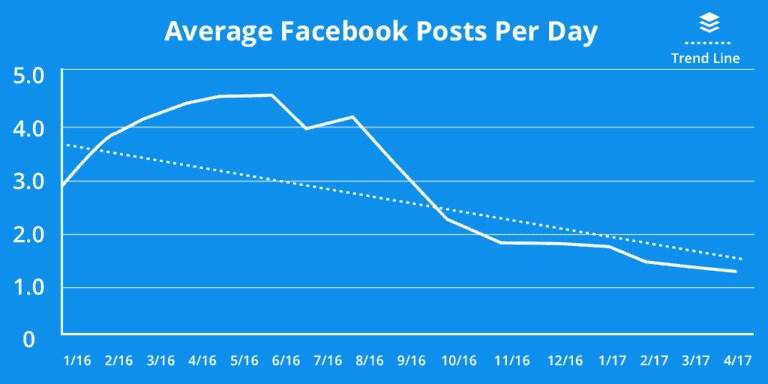
Source: Buffer
This study is well known and dates from 2017. The conclusions are still relevant today …
In 2016, the Buffer community manager reports that he published up to 5 times a day on their Facebook page. At the end of 2016, they slowly decreased the frequency of their publications until they published only once a day.
Look how the reach of their Facebook Page’s publications has risen sharply
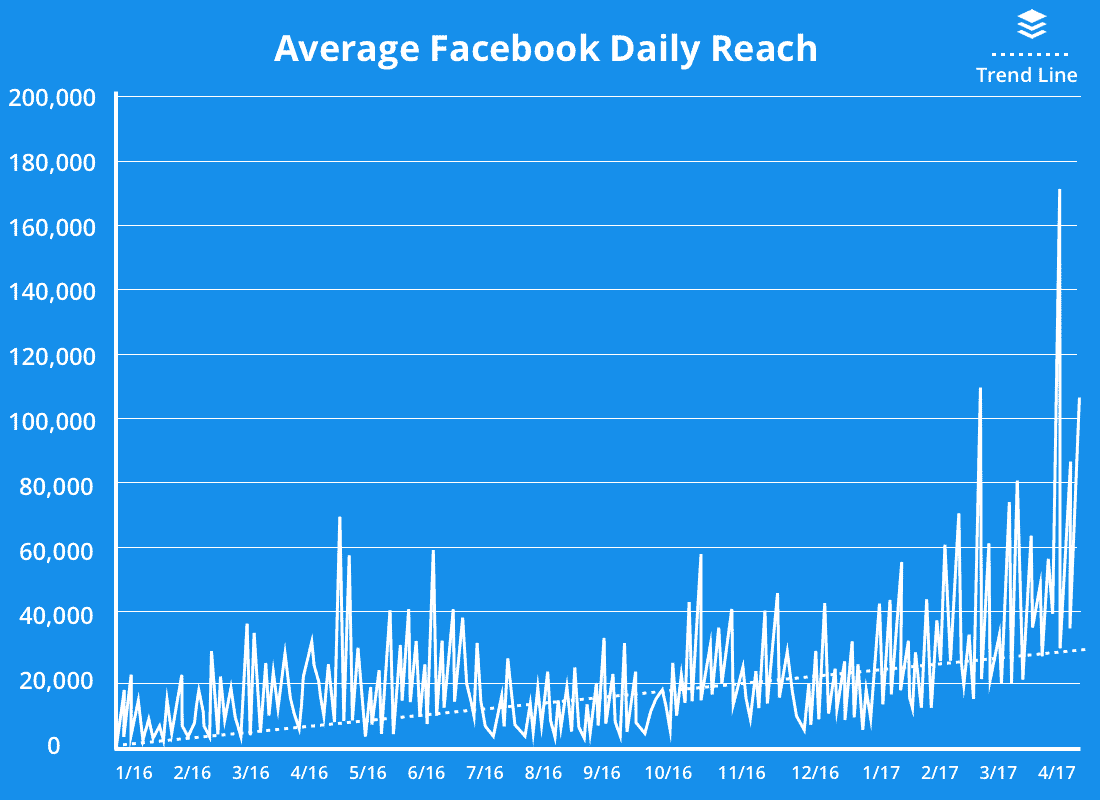
… just like the number of reactions, comments and sharing!
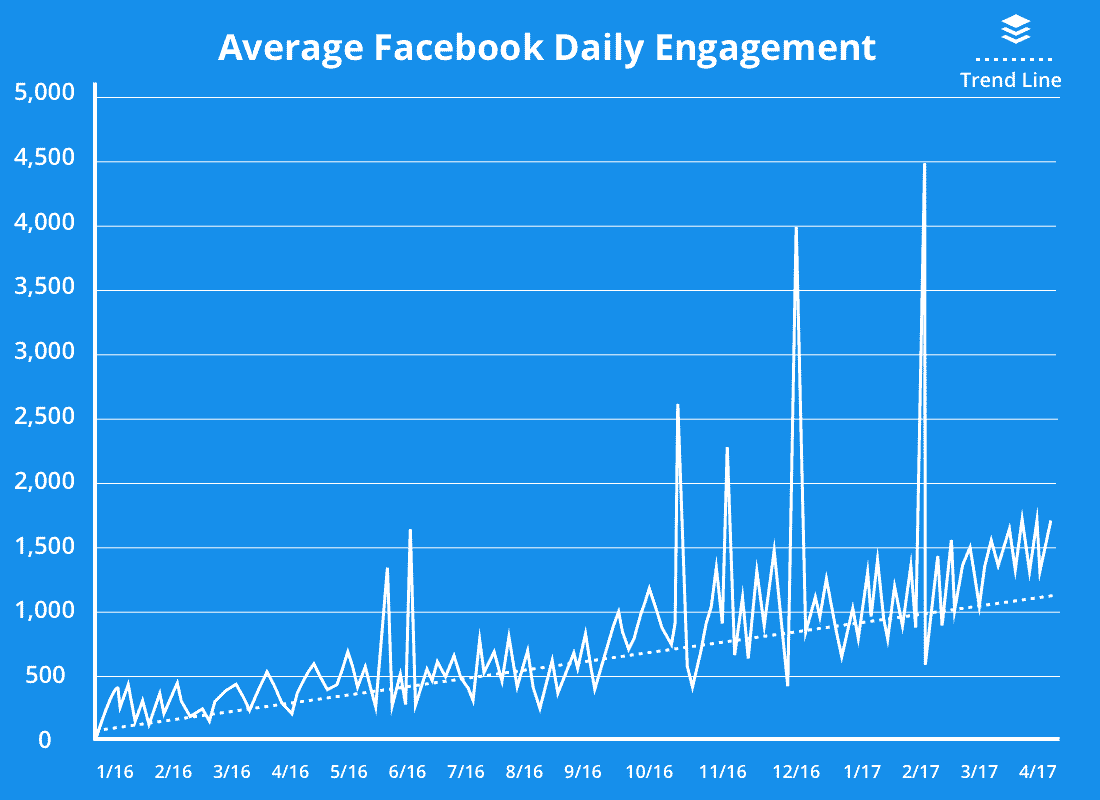
For most of you, it makes no sense to post 2 or 3 times a day on Facebook, Instagram or even LinkedIn.
You are not a multinational, so you should focus on the quality of the content you publish rather than the quantity.
(Note: We will see later in this article how to publish quality content.)
In general, I advise you to post once a day on weekdays and to vary the publications.
On Mondays, you could share news (from your company or your market).
Tuesday could be the day of the week you go Live and Thursday would be the day you publish an educational video or tutorial.
And for the weekend?
Some companies publish on weekends; others do not.
I’ve noticed that the scope and engagement of my social media posts are less critical on Saturdays and Sundays, but things may be different for you!
If you want proof, this study on social networks conducted by Social Sprout (source severe) confirms that the commitment on Facebook is rather low on Saturday and Sunday …
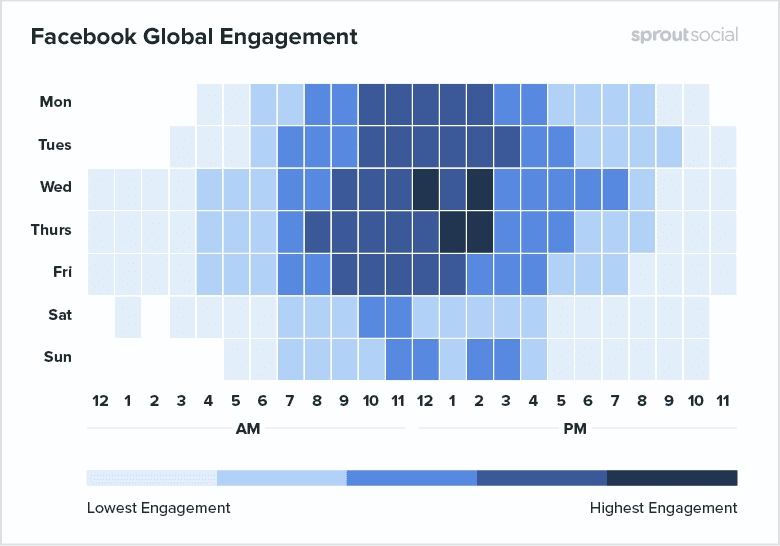
However, this same study shows that engagement on Instagram is not so low on Instagram on Saturdays and Sundays! (So it’s worth publishing the weekend on Instagram, the competition is less important).
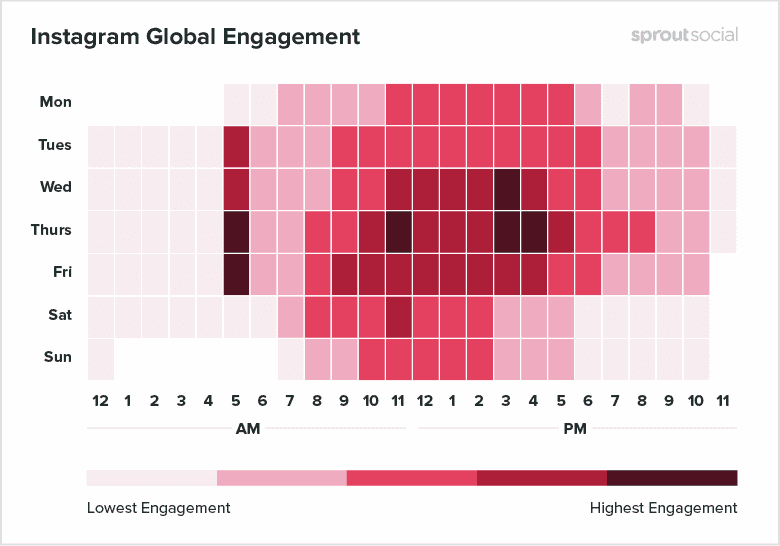
Each platform and each audience is different.
Test, test and test again to find the best days and the best hours to publish on social networks!
And if you miss ideas to publish on social networks.
2) You focus on the number of fans
Are you racing fans?
If so, you’re wasting your time (and maybe even your money)!
By 2019, it just does not matter how many fans you have on Facebook or relationships you have on LinkedIn.
What is important is the commission rate.
It is much more interesting to have 1000 very committed fans than 10,000 fans little engaged.
Indeed, if your fans are not very engaged, the algorithms of the social networks will quickly notice that nobody is interested in your publications and they will diffuse them less in the wire of news of your “fans”.
The worst part is that the more uncommitted fans you have, the harder it gets to touch them!
It’s paradoxical because Facebook is pushing companies to “promote their Page”.
If you press this button, Facebook will offer you to create an ad like this.

As you can see, this ad has one purpose: to push the user to love Page.
But is this a good idea?
In appearance yes, because you have one more fan on your Page and therefore more chances that your next publications will be seen!
In reality, it does not work as we hope.
If you’re buying fans this way, you’ll see your fans climb, that’s for sure. By cons, the scope of your publications (as a percentage of the number of fans) will decrease.
You want to avoid that!
A lower reach also means fewer people who will potentially react to your posts.
But do not believe me on my word …
Neil Patel, an American marketer, paid the price!
In total, he has invested $ 400,000 in Facebook advertising to acquire fans on his Facebook Page. His Facebook Page now has over 900,000 fans.
At first, his efforts paid off.
The natural organic range of its page has increased dramatically. Neil explains that he generated 240,000 visitors to his website just by posting his articles on his Facebook Page.
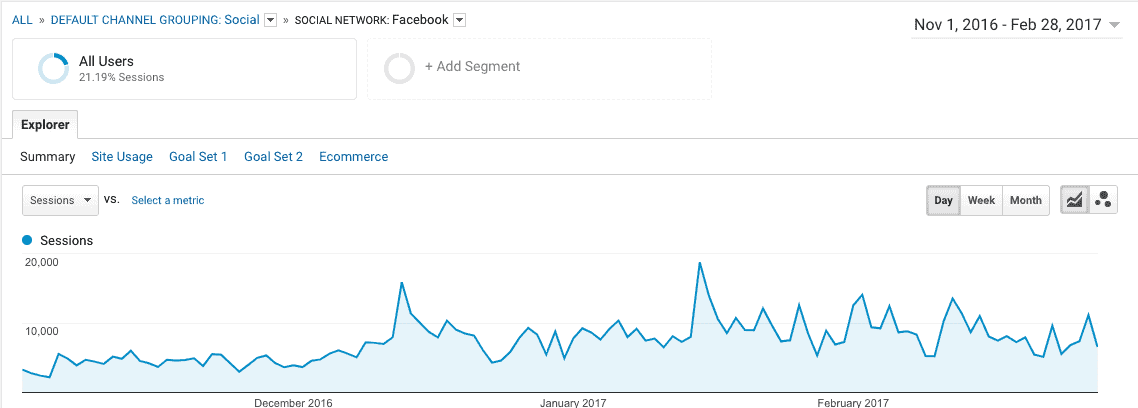
Source: neilpatel.com
The following of the curve:
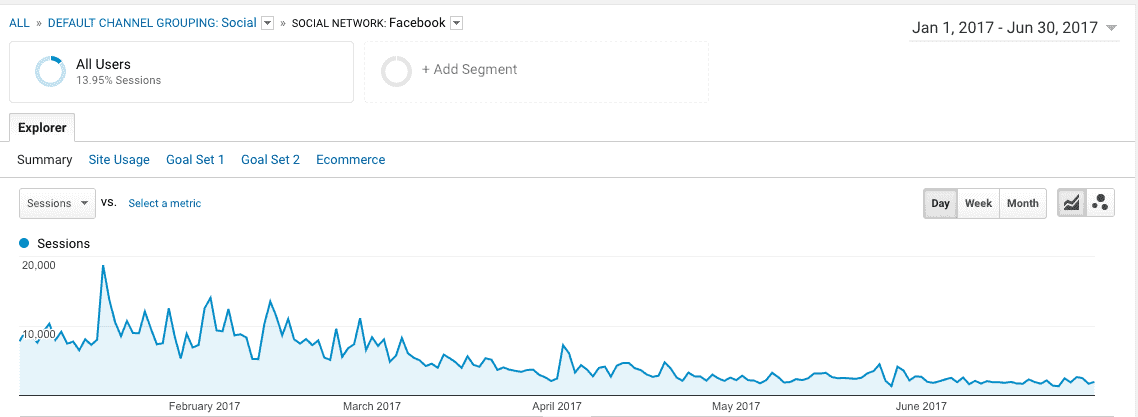
To quote Neil:
“Facebook fans and likes end up losing their value with the perpetual changes in Facebook’s algorithm. “
The more fans he had on his page, the lower the organic reach of his publications. Having 900,000 fans was worth less than having 100,000!
In summary: If you want to increase your fan base, avoid buying fans and focus on the interactions you already have with your community.
3) The content you publish is of poor quality
It’s almost oapparent.. and yet we still see poor quality content on social networks. This will change quickly in the next few years.
There was a time when social networks pushed all types of content, good or bad, for you to spend more time.
Today, users are more selective. They do not want to waste time reading a wrong article or watching a video that tells the story of the neighbour.
In 2019, there is to content published on these platforms, and only the best content is more visible.
Good content, what is it?
It’s content that inspires, educates or entertains. Such content collects feedback, feedback and sharing.
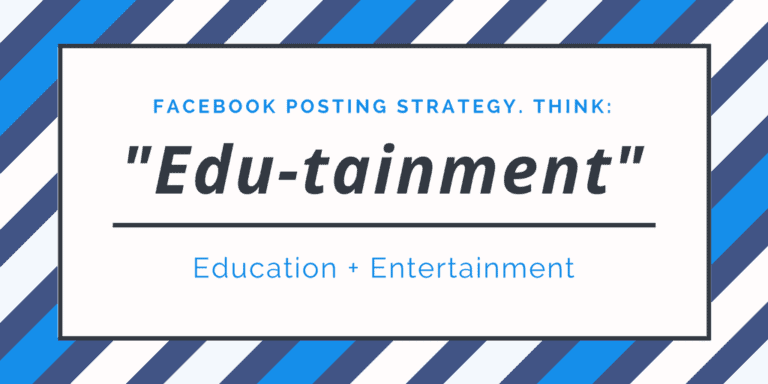
And lousy content, what does it look like?
It is content that does not provide value and is irrelevant to the target audience. In other words, it’s content that your audience did not deign to like, comment on or share.
Fortunately, you can quickly identify the quality content that you have already published on your accounts to post new, similar material.
For example, by analyzing the statistics of your Facebook Page, you can easily see what content has been enjoyed by your audience by analyzing the engagement rate.
Facebook also shows you the performance by type of published content:
- Video
- Picture
- Link
More often than not, you will notice that the videos have high engagement rates, but publications with a right image and a catchy description can also work very well.
This information offered by Facebook and Instagram is precious, but marketers tend not to take it into account.
I think it’s because this information is free. They are given less credit.
If you do not often post content on social networks or if you still have few fans, I advise you instead to observe the content published by your competitors or to use a tool like Buzzsumo to identify what is popular now on social networks.
For example, if I had to publish unique content on personal branding, be it a video or a series of Instagram Stories, I would first go to Buzzsumo to observe the three articles that garnered the most share on the networks by searching for this:
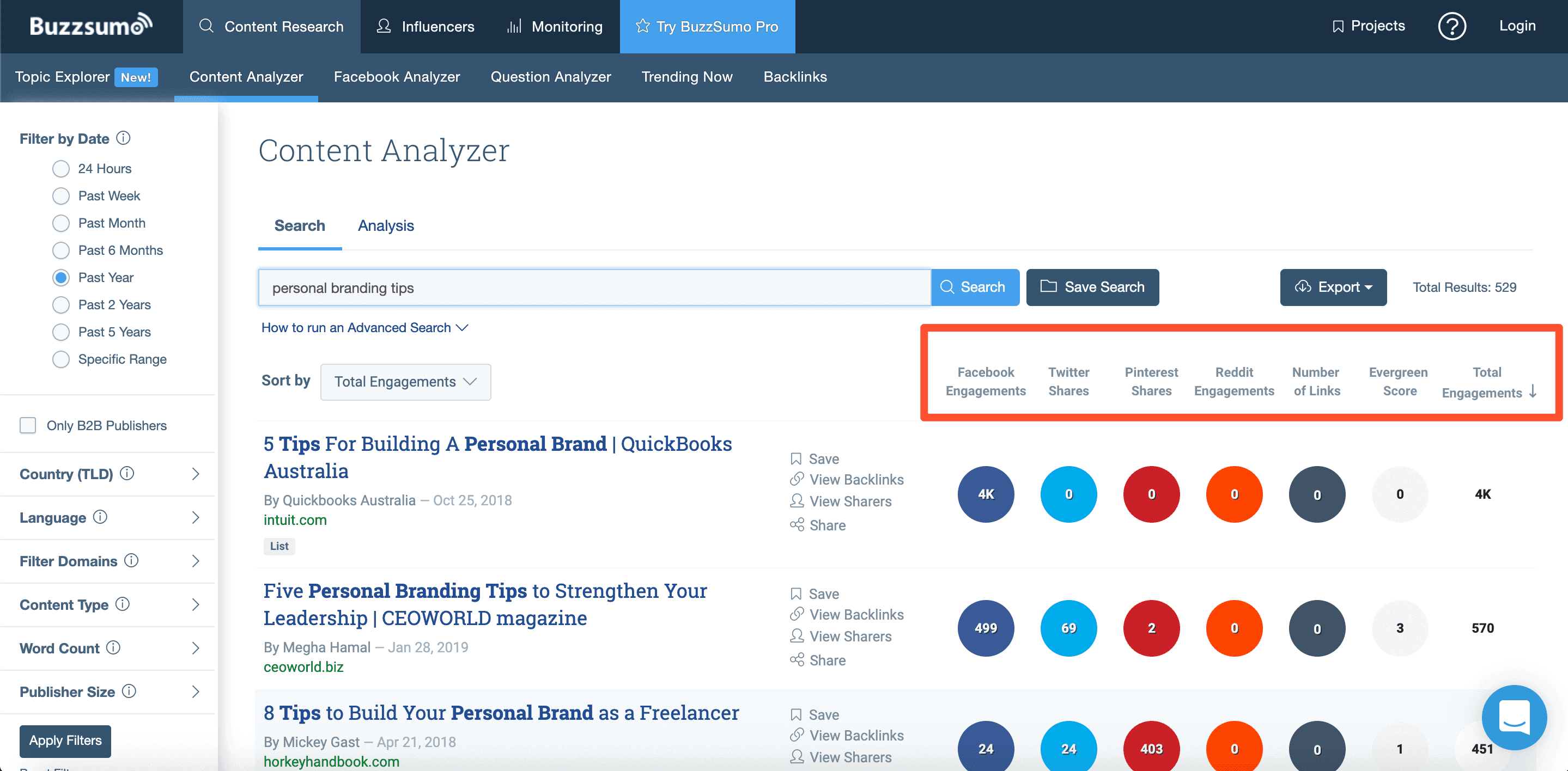
I would then select the 3 or 4 most interesting points, I would add my personal touch, and I would publish my short video on Facebook, Instagram and LinkedIn.
It’s just a way of doing things.
You could also deeply study your audience and the questions they ask themselves.
Facebook and Instagram also provide you with basic statistics to know the profile of your fans or subscribers.
You may notice that you have more women following you than men.
It’s a good start, but it’s not always enough to know that.
With polls, social communities or even comments left by users, you can already know what your target audience wants and what is problematic.
Then your job is to produce content FOR this audience and not for yourself.
4) You do not adapt to social network changes
Social networks change all the time! As a result, you must always keep abreast of developments, the findings of new studies and best practices.
In other words, you need to question yourself every quarter at least on:
- The type of content that is better to publish
- The frequency of publication
- Your editorial line
- And even the social networks on which you should be more or less present!
Let’s take an example.
Five years ago, Facebook was very different from what it is now.
You just had to post links to your site, some quotes and publish memes several times a day to succeed on the platform.
I extrapolate a little, but it was easier than now.
Recently, Buzzsumo analyzed 777 million social media posts, and they noticed that in 2018, link-type posts that link to an article or site outside of Facebook got the reach and commitment lower!
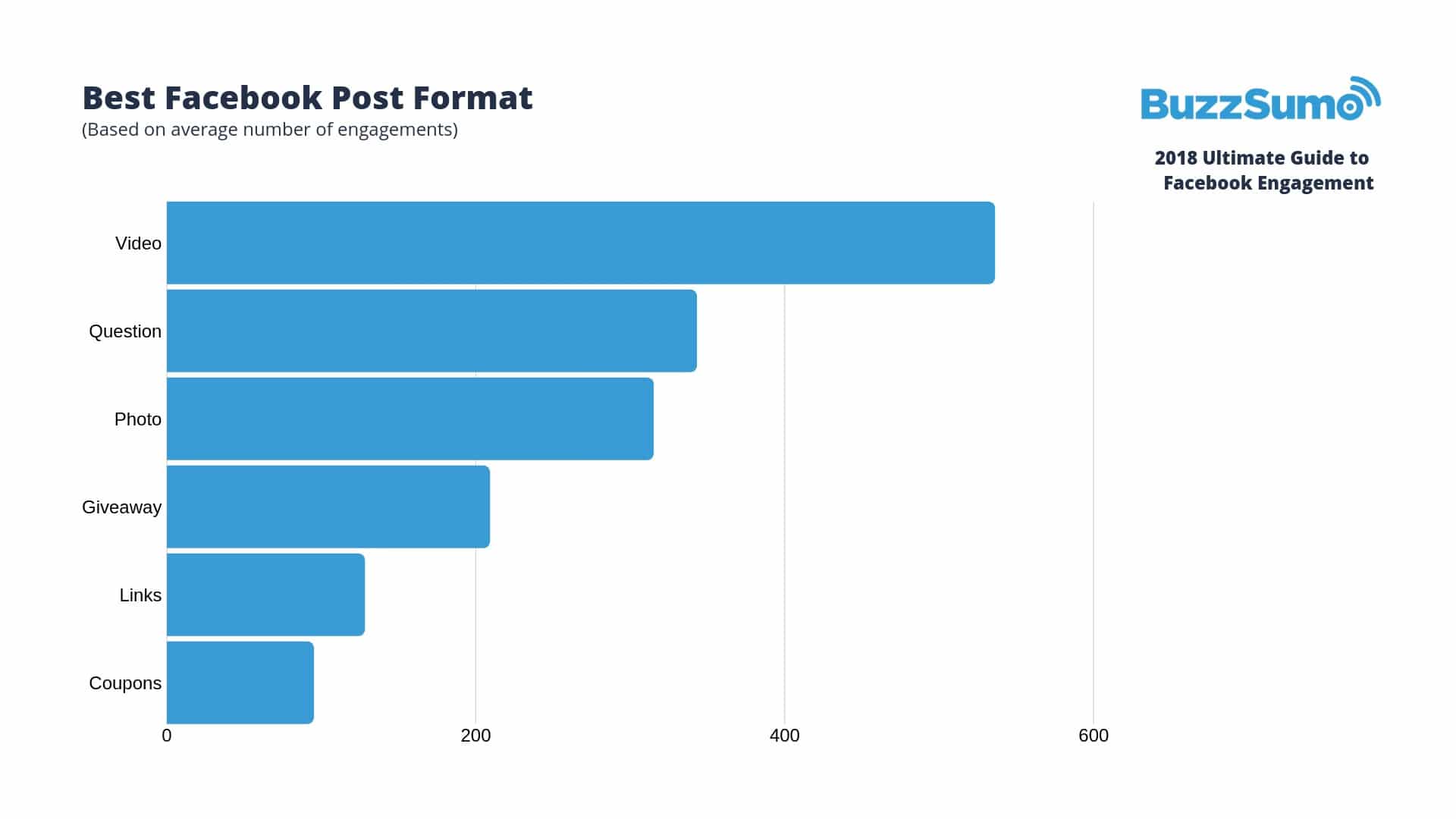
Today, what works on Facebook, according to the experts, are the publications where you ask a question and the videos.
The questions are so important to encourage your audience to leave comments (Facebook wants users to engage in conversations).
I almost always ask a question at the end of each publication and sometimes even in my ads.
If you’re curious, the videos that work best on Facebook, according to Mari Smith, are:
- Short videos in square format (between 30 and 60 seconds)
- 3 to 5 minutes of videos (face-camera, vlogs, etc.)
- Facebook lives
I gave you the example of Facebook because it is the social network that I know best!
Instagram, LinkedIn, Twitter and all other social networks are changing all the time too.
The only way to see these changes come is to keep up-to-date by reading industry blogs and experimenting with what you learn by doing your research.
This is what I do all the time not to let events overtake myself:-)
To make your watch, I advise you to limit to 2 or 3 blogs (including at least one media)
I like reading through the BDM media and the Buffer, Later and Social Media Examiner blogs. By reading these blogs a few minutes a day, I can keep abreast of the latest news and good practices of social media marketing.
I use Feedly to follow the news of all media and blogs (even those of my competitors!) In one place.
Fortunately, Feedly is free! When you have a minute, create an account.
5) You publish the same content on all social platforms
Imagine a world in which you have to post something on Facebook and then copy and paste to publish it also Instagram, LinkedIn, Twitter and Pinterest.
Everything would go so fast to publish on social networks. Also, there are dozens of tools to schedule a publication on multiple social networks at the same time.
You could do that … but that would be a big mistake!
Why?
Because every social platform is different.
“Culture”, habits, contents that are appreciated, good practices … Everything is different from one social network to another.
The “language” spoken on each platform is very different, and if you do not take that into account when you publish, you miss opportunities to grow your community … and your income.
Let’s take a few examples for you to understand better.
On Instagram, users do not go there to read long texts. They are there to be inspired to “travel” and discover the backstage of your business.
The storytelling is done through the visual, the stories or a short video.
On Facebook and LinkedIn, it’s different.
Users are in a different state of mind on these platforms. They expect more to be “educated” than Instagram, so more content like a video or a micro-article will work better.
In any case, that’s what I found.
That’s not all …
The format of your publication will also change from one social network to another.
On the other hand, on LinkedIn, you can easily publish a hosted native article within LinkedIn.
On social networks, you will be continually doing storytelling, but how to tell a story will be different from one social network to another.
6) You do not understand how social networks algorithms work
At the beginning of this article, I explained that the business model of networks was based on the attention of the users and the time they spend on the social platform.
YouTube, Facebook, Instagram and even LinkedIn all generate revenue through advertising. Companies pay to advertise on the social network.
That’s how it works, and the more users spend time there, the more advertisers can show their ads to their target audience.
For this reason, social network algorithms are always more sophisticated and intelligent to make their users addicted. Sound familiar?
Each algorithm is different, but they also have some things in common.
Social network algorithms favour publications that create conversations
We all love to talk.
On social networks, this is also the case. The more we discuss with other users, the more we want to spend time … and come back.
It’s human nature. We are social creatures!
As you can imagine, algorithms like to show the posts that generate discussions for others to join the conversation.
Today, the Facebook algorithm favours publications that elicit long and thoughtful comments, several comments or even sharing via Messenger.

The LinkedIn algorithm also likes very much commented publications. It is often these publications that become viral.
In summary: Think about the questions you could ask in your publications? What story could you tell in a video to elicit a reaction from the audience?
Social network algorithms want you to publish native content (hint: avoid links!)
Native content is content that is fully embedded in the culture and context of the platform on which it is published.
A good example is sharing a video on Facebook.
On Facebook, you can publish videos:
- Directly native: by loading it directly into Facebook.
- Or you can share a link to another video platform like YouTube (non-native content).
Unfortunately, publishing a video in a second way ultimately limits the circulation of your publication.
Facebook has no interest in showing a link to YouTube.
For the user who is on mobile, it is not a pleasant experience either.
LinkedIn will also limit the posting of YouTube links or videos because they “force” users to leave the platform.
If, like me, you use social networks in part to drive traffic to your site, try to publish a maximum of one link per week on your social accounts.
You can also boost the publication for your fans or customers. It will be cheaper.
Social network algorithms place a lot of importance on the first “moments” of your publication
The algorithms all work that way too.
When you publish a post, they show it to a small sample of your audience (fans, relationships or subscribers). If the publication quickly generates interactions, it will be distributed to a more significant number of people.
In this logic, we present the first hour to respond quickly to comments.
Know also that LinkedIn is perhaps the only platform where a human intervenes in the process of posting a post.
If your LinkedIn publication collects interactions, it will be sent to LinkedIn editors who will then decide if:
- The paper is displayed to more users
- The paper should not be seen more
It’s pretty exciting to know, I think.
Remember that the faster you respond to first comments, the more likely you are to show your posts to more users.
7) You do not interact with your audience
Do you like to send a message to someone and not receive an answer then or receive a few days later?

It’s frustrating when it’s innocuous.
That’s how your subscribers will feel if you do not take the time to answer them or worse if you do not answer them at all.
You do not want to make them live this frustration due to a lack of attention.
Still, I do not know how many companies, big and small, “forget” to respond to comments on social networks.
For example, see how Decathlon takes the time to respond to comments on Twitter …
Of course, the Decathlon community manager does not answer ALL comments, but he takes care to answer some comments and put out small fires (arguments, insults, etc.).
Also, note that your structure is large, the more users expect you to answer them (and quickly).
If you’re a blogger or influencer, your fans see you as a role model. Do not make the mistake of ignoring them or taking them off.
After that, your reputation is at stake every time you post on social networks.
Just be humble and try to answer everyone to the extent possible.
Conclusion
We all make mistakes. The important thing is to learn from these mistakes and avoid duplicating them.
If like me, you bet on social networks to develop your business, take the time to invest yourself.
Publish quality content regularly and do not try to work around algorithms by doing the opposite of what’s right for users.
You will be penalized in return.
Then you have to think about being sociable:
- Ask questions (and answer them)
- Telling anecdotes and stories
- Show your personality
- Stay yourself
A bit like in real life in itself!
